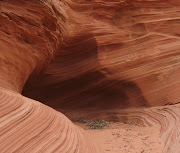 Imagine a the largest planet in our solar system developing a rash since 9 May. A new red spot or planet pimple glowed on gaseous Jupiter's enormous surface visible to the extraordinary eighteen year old Hubble space telescope. Named Great Red Spot, the largest of the three spots being almost three times the size of Earth, really it is an anticyclonic storm that never sleeps, became known to planet watchers since 1665. Red Spot, Jr was spotted in 2006 from formations first spotted in 1938. This latest spot as yet without a boring Jupiter name like Baby Spot, was white with an oval appearance, but suddenly turned bright red after too much solar UV radiation. Who knew Jupiter needed sunscreen? Ominous things are happening on Jupiter's surface. Giant Spot is on a head-on crash course to demolish Baby Spot by August of this year. Note to NASA: please ensure Jupiter's "event" occurs before you have the Hubble maintenance crew out there fiddling with the antenna. Don't become the Heidi happening in space - in the 1960's a football game was tense and in its last moments, but not finishing on time so some TV network genius decided to switch to the movie Heidi rather than see the outcome of the game.
Imagine a the largest planet in our solar system developing a rash since 9 May. A new red spot or planet pimple glowed on gaseous Jupiter's enormous surface visible to the extraordinary eighteen year old Hubble space telescope. Named Great Red Spot, the largest of the three spots being almost three times the size of Earth, really it is an anticyclonic storm that never sleeps, became known to planet watchers since 1665. Red Spot, Jr was spotted in 2006 from formations first spotted in 1938. This latest spot as yet without a boring Jupiter name like Baby Spot, was white with an oval appearance, but suddenly turned bright red after too much solar UV radiation. Who knew Jupiter needed sunscreen? Ominous things are happening on Jupiter's surface. Giant Spot is on a head-on crash course to demolish Baby Spot by August of this year. Note to NASA: please ensure Jupiter's "event" occurs before you have the Hubble maintenance crew out there fiddling with the antenna. Don't become the Heidi happening in space - in the 1960's a football game was tense and in its last moments, but not finishing on time so some TV network genius decided to switch to the movie Heidi rather than see the outcome of the game.Moreover, the color of several bands on the planet has been changing since the upheaval began, said Christopher Go, an amateur astronomer in Cebu, the Philippines, who joined de Pater's team two
years ago. Go alerted the astronomical community in early 2006 about the color change of Red Spot Jr.
"Lately, the red color of the Oval BA has faded a little bit, while the Great Red Spot may have turned dark red," Go said.
The UC Berkeley team will work with the amateur astronomy community to investigate the possible origin of this turbulence, which is not
The Great Red Spot and Red Spot Jr. are squeezed between bands called shear flows, where the flow above each storm is moving westward and the flow below is moving eastward. Since the shear flow in each band is slightly different, and the storms are different sizes, Red Spot Jr. drifts slowly eastward toward the Great Red Spot while the Great Red Spot drifts slightly westward toward Red Spot Jr. In late June, this storm will pass the Great Red Spot, as it does every two years.
understood.
 Theoretically does this mean there is a climate change issue on Jupiter? It takes almost twelve earth years for Jupiter to make it once round the sun and its 317.8 times the size of our home planet. Tangerine and Chocolate clouds layers filled with ammonia change colors potentially based on the Suns ultraviolet lights are the uppermost clouds. This makes Jupiter an astronomer/photographer's dream. No one can definitive say why the bands of clouds change colors. Winds reaching 100 mph in certain zones making a Jovian weather report filled with possibilities of storms that can last a couple hours or a few Earth centuries, especially at the equator. Through all of this, the hardest working telescope in space, Hubble, spotted the latest baby red spot.
Theoretically does this mean there is a climate change issue on Jupiter? It takes almost twelve earth years for Jupiter to make it once round the sun and its 317.8 times the size of our home planet. Tangerine and Chocolate clouds layers filled with ammonia change colors potentially based on the Suns ultraviolet lights are the uppermost clouds. This makes Jupiter an astronomer/photographer's dream. No one can definitive say why the bands of clouds change colors. Winds reaching 100 mph in certain zones making a Jovian weather report filled with possibilities of storms that can last a couple hours or a few Earth centuries, especially at the equator. Through all of this, the hardest working telescope in space, Hubble, spotted the latest baby red spot.NASA has colorful Jupiter on the brain. Juno is scheduled to take off in August 2011 to complete due diligence on what really is at the core of the planet, its gravity and magnetic fields and what is happening with the polar magnetosphere. Solar powered Juno will be in an eleven day fixed polar region orbit after arriving at Jupiter "custom's counter" sometime in 2016.The advent of yet another red spot in Jupiter's turbulent atmospheremay support the idea that the planet is undergoing climate change.
Fluid-mechanics professor Philip Marcus of the University of California predicted in 2004 that rising temperatures would destabilize Jupiter's jet streams and give rise to more vortices.

How does one get to deep space considering the time involved and the multitude of things that could go wrong. failure will always be a necessary part of space. Part of the learning originates with the use of robots and mechanical engineering to launch into space. Use Earth's gravity like a bumper on a pool table and off goes personkind's latest robotic explorer before manned flight. Space Invaders: How Robotic Spacecraft Explore the Solar System by the prodigious Michel van Pelt makes for absorbing reading.










No comments:
Post a Comment